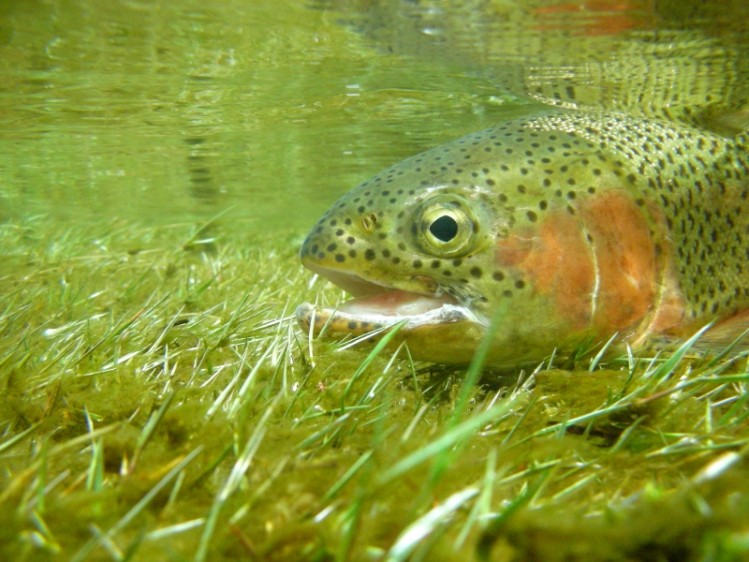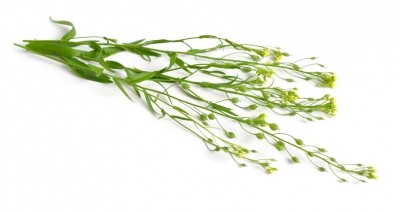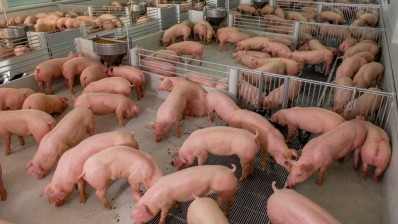High-oil residue camelina may support growth in farmed rainbow trout

A team of researchers from Dalhousie University, the Aquatic Research Cluster, Perennia Food and Agriculture and the Memorial University of Newfoundland examined the use of high-oil residue camelina meal (HORM) with additives, when included in the diet of rainbow trout.
The group published its work in the journal Aquaculture.
“The objective of this project was to determine the effect of water, enzyme and R. oligosporus treatment on the ANF [anti-nutritional factor] content of HORM, as well to determine the suitability of these treated HORM products as feed ingredients for rainbow trout,” said the authors.
The group found that an inclusion of up to 80g/kg of high-oil residue camelina meal could be included in the diets of juvenile rainbow trout without hindering production or fish performance.
“Since there was no evidence of inflammation in HORM-fed fish compared with control diet fed fish based on histology or distal intestine inflammatory biomarker gene expression in this study, rainbow trout at this life stage are capable of tolerating HORM in their diet at a dietary inclusion level of 80 g/kg,” the researchers said.
However, it would be interesting in future work to assess the influence of larger levels of enzyme use, they added.
“The HP-SZ [high-pectinase superzyme] product had an interestingly positive effect on intestinal histology,” they said. “It would be interesting in the future to feed the same enzyme treatments to rainbow trout at higher dietary inclusion levels to determine which, if any, levels would cause inflammation in the fish, as assessed by histology and distal intestine gene expression.”
Why high-oil residue camelina?
Camelina is an oilseed being developed as a potential alternative feed ingredient for use in fish feed, the researchers said. High-oil residue camelina meal is generated as a by-product when the oil in the seed is extracted with a mechanical expeller process.
At that stage the meal has about 34% crude protein and 10-13% residual oil, they said. It also offers high levels of unsaturated fatty acids.
However, the oil meal faces a limiting factor in the amount of anti-nutritional factors included in the by-product, which can alter the digestibility, they said. “These ANFs include glucosinolates, mucilage, phytic acid, sinapine and tannins,” they added.
Earlier work demonstrated that replacing fish meal with a 10% solvent-extracted camelina meal reduced the growth when used in feed for Atlantic salmon, the researchers said. As the meal has ANFs, the growth restriction may be linked to those elements.
Finding ways to reduce the amount of ANFs in the meal is an important step to improving the value and use of the n-3 fatty acid potential plant-based protein meal for aquafeed, the researcher said. However, some types of ANFs can be reduced or tempered based on how much is in the diet and others can be altered with processing.
“Processing methods such as water-soaking and dietary enzymes and fermentation with the Rhizopus oligosporus fungus may help eliminate or alleviate the negative influence of some ANFs in camelina and other plant meals,” they said. “Research involving the application of carbohydrase enzymes, such as xylinases, cellulases and pectinases, to plant-based feed ingredients included in aquafeeds is also increasing in effort to elucidate methods of improving the nutrient availability and utilization of these ingredients.”
Additionally, a fungus like Rhizopus, which is used to make tempeh from soybeans, may reduce alkaloids and improve the composition of crude protein, they said. And it may have other positive effect when added to the meal.
Methods and materials
In the feeding trial, 603 fish were given one of trial seven diets for a period of 112 days, said the researchers. The diets included a control, a diet with HORM at 80g/kg inclusion, and a series of diets mixed to the specifications of the HORM diet but with that ingredient replaced with an altered form.
These included a diet with HORM that was water-soaked, with HORM mixed with pectinase, where HORM had added Superzyme, a feed with high-pectinase Superzyme HORM (HP-SZ Horm) or a diet with Rhizopus HORM/wheat – which was a 1:3 wheat:HORM fermented with R. oligosporus (R-HORM), they said
“The water-soaked and enzyme-treated HORM products were prepared using the following ingredient ratios: Water-soaked HORM: 1,000 g HORM + 7,000 ml water; pectinase HORM: 1,000 g HORM + 7,000 ml water + 0.015 g pectinase, Superzyme HORM: 1,000 g HORM + 7,000 ml water + 0.06 g Superzyme™-OM Concentrate; HP-SZ HORM: 1,000 g HORM + 7,000 ml water + 0.015 g High Pectinase Superzyme™-OM Concentrate,” said the researchers.
Fish were given a week of the control feed to acclimate to the trial tanks, they said. After acclimation fish were given trial feeds and weighed every 28 days with sample fish being collected on days 0, 56 and 112.
Feed intake was recorded, and growth measures and feed intake parameters were calculated, they said. These included body weight, weight gain, specific growth rate (SGR), thermal growth coefficient, mean feed consumption, feed conversion ratios (FCR) and protein efficiency ratio (PER).
Results
The main differences between the fish getting the different diets were seen from days 28-56, said the researchers. At that point the fish getting the water-soaked HORM and the R-HORM gained less weight than those on the control diet.
However, several trial feed were found to be acceptable for use in trout diets, they said.
“An inclusion level of 80 g/kg HORM and water- and enzyme-treated HORM (all three treatments) are acceptable in juvenile rainbow trout diets,” they said. “Future studies may involve similar treatments at higher dietary inclusion levels and HORM fermented with R. oligosporus using a substrate other than wheat.”
At the end of the feeding trial, fish on the control diet had a higher SGR than those getting the R-HORM diet, said the researchers. Fish getting any of the diets, other that the water-soaked HORM had an improved fork-length when compared to those getting the R-HORM diet.
“There were no significant differences in the transcript levels of eight inflammatory biomarker genes (GILTa, GILTb, PAR2a, PAR2b, IL1ß3, MyD88, TGFß1a and TGFß1b) in the distal intestines of fish fed the HORM, HP-SZ HORM or R-HORM diets, compared with fish fed the control diet,” they said.
Carcass proximate and mineral composition were similar among the diets, and most histological parameter were similar for all feeds, they said. But fish getting the HP-SZ HORM diet had longer villi and larger villus area than those on the Pectinase HORM diets and longer lamina propria and lamina area.
Source: Aquaculture
Title: Evaluation of enzyme- and Rhizopus oligosporus-treated high oil residue camelina meal on rainbow trout growth performance and distal intestine histology and inflammatory biomarker gene expression
DOI: 10.1016/j.aquaculture.2017.09.017
Authors: S. Collins, S. Xie, J. Hall, M. White, M. Rise, D. Anderson















